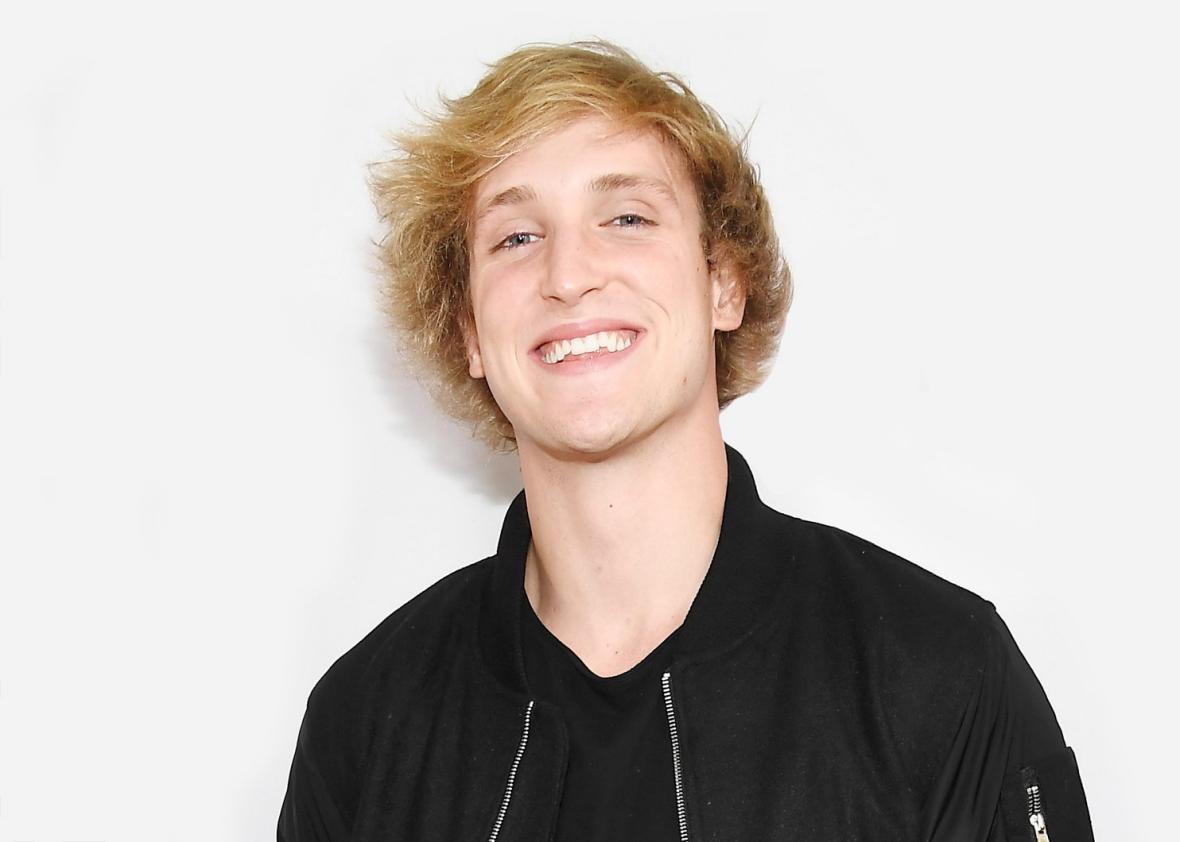After pissing off pretty much everyone on the internet by filming and joking about his encounter with the body of a man who’d hanged himself, YouTube star Logan Paul announced on Wednesday a hiatus from his daily vlog. “Taking time to reflect,” Paul tweeted—definitely not a bad idea for an influential but chronically scandal-plagued creator with reportedly millions to lose. Whether he actually dedicates some serious thought to his mistakes, Paul’s self-imposed detention in YouTube jail follows a familiar pattern for entertainers who’ve outraged the public: going away, at least for a little while. But is there any real check on this new breed of digital creators, who are more beholden to their forgiving fans than standards of common decency?
Paul began making web videos at age 10 and had already become a Vine star by the time he moved to Los Angeles at age 19 to pursue success in more than six-second spurts. (In 2015, he set his sights on becoming “the biggest entertainer in the world.”) It’s useful to compare Paul’s career, which has been managed by a relatively small team, to those of Disney Channel alumni like Miley Cyrus, Selena Gomez, Demi Lovato, and Nick Jonas, all of whom are just three years older than the 22-year-old vlogger, and who, at least initially in their careers, appealed to a similar tweenage and teenage demo. Paul’s Jackass-inspired stunts and pranks are in some ways a response to Mickey’s sanitized wholesomeness and compulsory cheer. A lot of kids, it turns out, would rather watch the vlogger wreck his balls.
But with recent revelations about the disturbing content that makes it through YouTube’s purportedly child-friendly filters, it’s hard not to feel nostalgic for the days when crassly commercial cable channels boasting network monitors and Federal Communications Commission regulators monopolized children’s entertainment. If you had a problem with a storyline in Hannah Montana, you knew who to complain to: Disney, and if that didn’t work, one of the corporate advertisers sponsoring the show. It’s true that YouTube has hosted a vast universe of teeny-bopper content for years now. But Paul’s stumble into broader notoriety this week—his more than 12 million YouTube followers must have been shocking to the uninitiated—has underscored how atomized this corner of the industry is, and how feeble its gatekeepers are. Paul has lent his mug to several companies, but his fan base is probably the constituency he has to please most, especially to grow his clothing line, Maverick Apparel, which reportedly generates $1 million to $5 million of revenue a year. And since young YouTube viewers are notoriously critical when their favorite vloggers “sell out,” chances are good that he has to placate them more than he has to make nice with Pepsi. When Logan Paul screws up, the only people who could really fire him probably aren’t very inclined to do so.
It’s certainly unlikely that YouTube will step up to fill Disney’s role as the civility police. Despite its pledge last month to increase its content-moderator ranks to 10,000, the Google-owned platform prides itself as a freewheeling no man’s land where anyone can do anything. The company’s response to Paul’s cruel video was widely criticized as tepid, and efforts to get YouTube to boot its now-most-famous creator are unlikely to get anywhere. Such stonewalling buttresses traditional TV networks’ claims to advertisers that, as longtime cultural gatekeepers, television can guarantee “brand safety” to corporate advertisers. And it makes YouTube look a lot more risky.
It’s worth pointing out that traditional entertainment conglomerates don’t always get it right, either. The past two months saw controversies about the castings of Mel Gibson in Daddy’s Home 2 and Johnny Depp in the next Fantastic Beasts installment. (Both actors have been accused of domestic assault by their former spouses.) And if Disney has profited handsomely from its teen fare’s squeaky-clean reputation, it’s indisputable that that calculated chasteness took a toll on the teenagers asked to embody that innocence for gruelingly long hours for years on end.
Still, if the Paul and the PewDiePie standoms have demonstrated anything, it’s that fans will double down on their support, especially when a creator’s appeal is based on perceptions of authenticity, political incorrectness, and refreshing candor. (Sorry, everything does boil down to Trump.) So while Paul has wisely hidden away, as far as his stans are concerned, he’s free to make his comeback whenever he wants. In Paul’s case, we may luck out: His ambition to become the “white Will Smith,” per his father, may force him to act like the more mainstream star he wants to be, especially with his roles in productions for YouTube Red, the company’s subscription section, on the line. But that would depend on whether he can learn how to make his fans miss him. And when the internet gets involved, not even real stars have the patience and skill to master that oldest trick of stardom.
